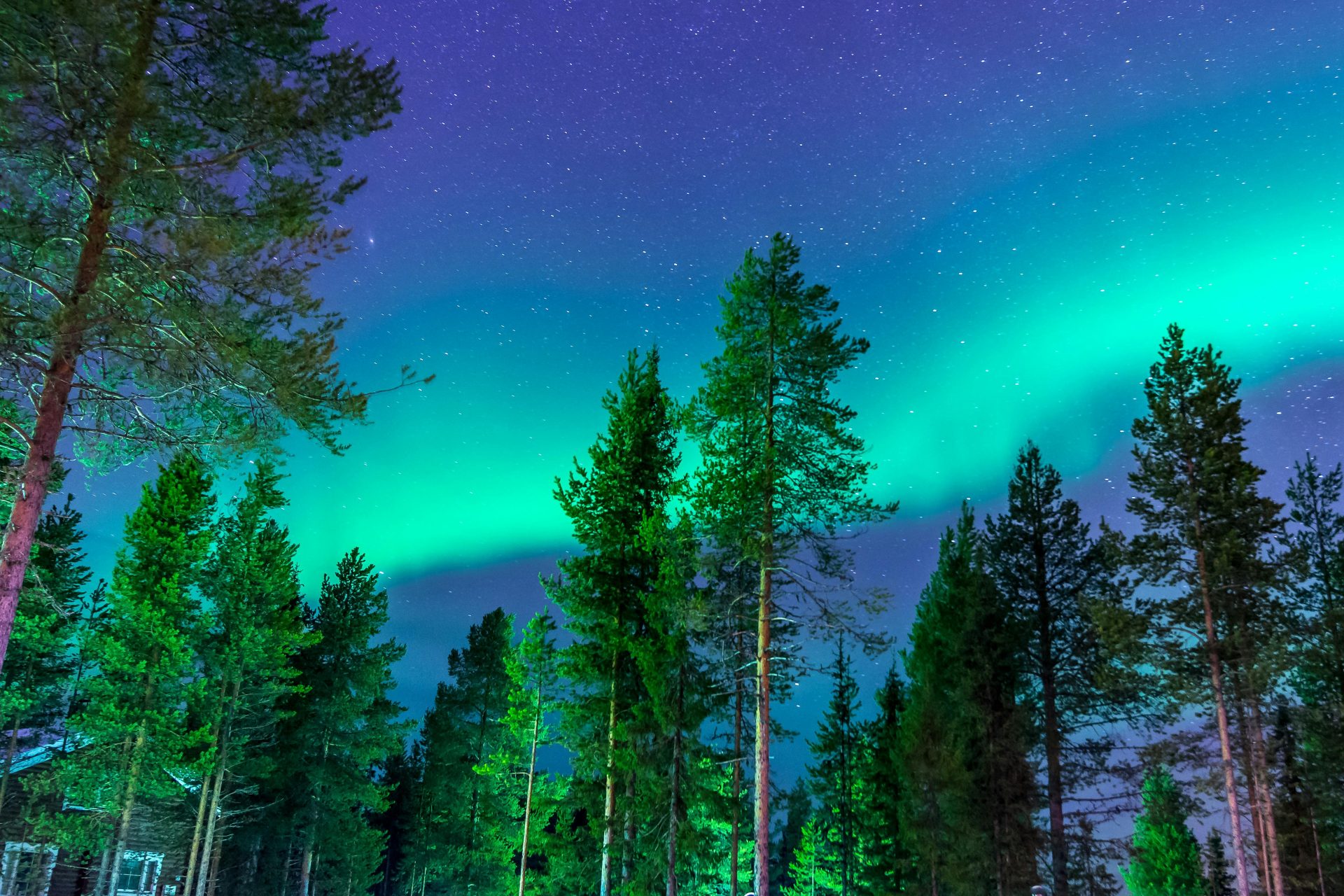The Inca Empire and the Sacred City of Machu Picchu

Before diving in, please note: This post is for informational purposes only. If you’d like to know more about how we approach topics, feel free to check out our friendly Disclaimer Page.
Hey there, amazing readers! 🖐️ Just a quick note: yes, we know there are a lot of ads here. Trust us, we get it—it’s not the prettiest look, but they help us keep this blog alive and kicking. Those pesky little ads cover the costs of all the behind-the-scenes magic, from hosting and tech stuff to creating content we hope you’ll love.
We’re committed to delivering quality posts, and your support (even just sticking around despite the ads) means everything to us. So, bear with us, and thanks for helping us keep the good vibes rolling. Now, on to the fun stuff! 😉
TRANSLATE BUTTON AT THE END OF THE ARTICLE
A Quick Overview
The Inca Empire was one of the most fascinating civilizations in history, reigning over vast territories in South America from the early 15th century until the Spanish conquest in the 16th century.
While there are numerous remnants of this powerful empire scattered throughout the Andes, none are as captivating as Machu Picchu.
This sacred city is often hailed as a jewel of Inca engineering and culture.
Let’s embark on a journey to explore the rich history, stunning architecture, and enduring legacy of both the Inca Empire and Machu Picchu.
Introduction to the Inca Empire’s Rich History
The Inca Empire, known as Tahuantinsuyu, was the largest empire in pre-Columbian America.
It included parts of modern-day Peru, Ecuador, Bolivia, Argentina, and Chile.
The Incas excelled in various fields, from agriculture to astronomy, creating a complex society that left a lasting impact.
The story of the Inca begins in the early 1400s with the rise of their first leader, Pachacuti.
Under his rule, the empire expanded rapidly through conquests and alliances.
They built an extensive road system that connected distant regions, facilitating trade and communication.
Inca society was structured in a highly organized manner.
At the top was the Sapa Inca, who was considered a descendant of the sun god, Inti.
Below him were nobles, priests, and the common people, known as the ayllu.
Each member of society had specific roles and responsibilities, promoting a sense of unity and purpose.
The empire thrived for over a century, with its capital at Cusco, a city that was considered the "navel of the world." The Incas developed advanced agricultural techniques, such as terracing and irrigation, which allowed them to cultivate various crops in the challenging Andean terrain.
However, the empire’s prosperity came to an abrupt end with the arrival of Spanish conquistadors in the 1530s.
The Spanish, led by Francisco Pizarro, took advantage of internal strife and disease.
By 1572, the last Inca stronghold was captured, leading to the fall of the empire.
The Rise of the Inca Empire in South America
The Inca Empire’s rise can be attributed to several factors.
First, Pachacuti’s leadership transformed the small kingdom of Cusco into a sprawling empire.
He implemented a series of military campaigns that subdued neighboring tribes.
Next, the Incas were adept at diplomacy.
Instead of solely relying on military might, they often integrated conquered peoples into their empire through marriage and alliances.
This tactic not only expanded their reach but also fostered loyalty among newly acquired subjects.
Their innovative agricultural practices played a vital role in their expansion.
The Incas cultivated diverse crops, including potatoes, maize, and quinoa, ensuring food security for their growing population.
The surplus allowed them to support a large military and a complex administrative system.
Additionally, the Incas excelled in architecture and engineering.
They constructed impressive stone structures that have stood the test of time, showcasing their skills.
Many of these structures, including the iconic Sacsayhuamán, were built without mortar, relying on precise stone-cutting techniques.
The extensive road network, known as the Inca Trail, facilitated trade, communication, and military movement across the empire.
This infrastructure connected far-flung regions and helped maintain control over the vast territories.
By the time of its peak around the 15th century, the Inca Empire was a formidable force in South America.
However, internal conflicts, combined with the arrival of European powers, would soon bring about its downfall.
Exploring the Geography of the Sacred City
Machu Picchu is nestled high in the Andes Mountains of Peru, at an altitude of approximately 2,430 meters (7,970 feet).
The geographical setting is stunning, surrounded by steep cliffs, lush vegetation, and the Urubamba River below.
This breathtaking landscape not only provides a dramatic backdrop but also played a crucial role in the city’s construction and function.
The site covers an area of about 13 square kilometers and is divided into distinct agricultural, religious, and residential zones.
Terraces carved into the mountainside allowed the Incas to cultivate crops in this rugged terrain, showcasing their ingenuity in agricultural practices.
The natural beauty of the surrounding mountains, such as Huayna Picchu, adds to Machu Picchu’s allure.
The Incas likely chose this location for both its strategic advantages and spiritual significance.
The mountains were deeply revered in Inca culture, often associated with powerful deities.
In addition to its breathtaking setting, the climate at Machu Picchu is temperate, making it suitable for agriculture.
However, the region experiences heavy rainfall during the wet season, which can affect accessibility.
Today, visitors often trek to Machu Picchu via the Inca Trail, a multi-day hike that immerses them in the stunning landscapes of the Andes.
The combination of the natural environment and the archaeological wonder creates an unparalleled experience.
Machu Picchu: A Marvel of Inca Engineering
Machu Picchu is often regarded as one of the greatest achievements of Inca engineering.
The city is a marvel of design, featuring sophisticated terracing, water management systems, and precision stonework that has withstood centuries of natural wear and tear.
The construction of Machu Picchu utilized the finest local materials, primarily granite.
The stones were carved with such precision that they fit together perfectly without the need for mortar.
This technique not only provided stability but also allowed the structures to withstand seismic activity, a common occurrence in the region.
The terracing system is another impressive feature.
The Incas built numerous terraces on the steep slopes to maximize arable land.
The terraces were ingeniously designed to manage water runoff and prevent soil erosion, supporting sustainable agricultural practices.
Machu Picchu also boasts a complex drainage system.
The Incas constructed channels and fountains that diverted rainwater away from the structures, minimizing damage.
This foresight in engineering reflects a deep understanding of the surrounding environment.
The architectural layout of Machu Picchu is equally stunning.
The city includes temples, plazas, residential areas, and agricultural lands, all interconnected through a series of pathways.
The Intihuatana stone, believed to be a ritual stone associated with astronomy, stands as a testament to the Incas’ sophisticated knowledge of celestial movements.
Visiting Machu Picchu, one cannot help but be awed by the ingenuity of its construction.
It’s a place where history, culture, and nature converge in an extraordinary manner.
The Meaning Behind Machu Picchu’s Name
The name "Machu Picchu" translates to "Old Peak" in Quechua, the language of the Incas.
The name is fitting, as the site sits atop a ridge between two prominent peaks, Machu Picchu and Huayna Picchu.
This connection to the mountains reflects the Inca reverence for nature and their belief in the spiritual significance of the landscape.
Some scholars also suggest that Machu Picchu served as a royal estate or a sacred religious site.
Its isolated location and impressive architecture align with the idea that it was a retreat for Inca nobility or a ceremonial center dedicated to the worship of the sun and other deities.
Interestingly, the site was relatively unknown to the broader world until its rediscovery in the early 20th century.
This obscurity also adds to the mystique surrounding Machu Picchu.
Many believe that its hidden nature allowed it to remain intact and preserved for future generations to explore.
The Incas had a profound connection to their environment, and this is reflected in the naming of Machu Picchu.
The mountains were not just physical landmarks but spiritual companions in their lives.
The name encapsulates the essence of Inca culture, which harmonized human existence with the natural world.
Daily Life in the Inca Empire: A Vibrant Culture
Daily life in the Inca Empire was rich and varied, characterized by a strong sense of community and interdependence.
The Incas had a well-defined social structure, with each individual playing a specific role in society.
At the core of Inca life was the ayllu, a communal group that shared land, resources, and responsibilities.
Families within an ayllu worked together in agriculture, engaging in farming, animal husbandry, and textile production.
This communal approach fostered a sense of belonging and mutual support.
Men primarily worked in agriculture and construction, while women were involved in weaving, cooking, and childcare.
The women’s roles were highly valued, and their craftsmanship in textiles was a source of pride.
Inca textiles were renowned for their intricate designs and vibrant colors.
The Incas also celebrated various festivals throughout the year, marking important agricultural cycles.
These celebrations often included music, dance, and feasting, reinforcing social bonds and cultural identity.
The Inti Raymi festival, honoring the sun god, was one of the most significant events, drawing large crowds.
While the daily life of the Incas was predominantly agrarian, skilled artisans also thrived.
Potters, metalworkers, and stone masons crafted goods that showcased their expertise.
The Incas were known for their advanced metalworking, creating intricate jewelry and tools from gold, silver, and bronze.
Education was also an essential aspect of Inca culture.
While formal education was limited, knowledge was passed down through generations.
Elders played a critical role in teaching the younger members of the community about traditions, history, and survival skills.
The Incas built a vibrant and cohesive society, where cooperation and shared responsibilities shaped their daily lives.
They created a culture that placed significant value on community, craftsmanship, and spirituality.
Discovering Inca Religion and Their Beliefs
Religion was a cornerstone of Inca society, deeply intertwined with their daily lives and governance.
The Incas worshipped a pantheon of deities, with Inti, the sun god, holding the highest position.
They believed that the Sapa Inca was a direct descendant of Inti, which legitimized his rule.
Rituals and offerings were an integral part of Inca worship.
They made sacrifices to appease the gods, seeking blessings for agricultural prosperity, good weather, and overall well-being.
These offerings could include food, textiles, and even animal sacrifices.
The Incas practiced a form of ancestor worship, honoring their deceased ancestors and believing that they could influence the living.
People held festivals to celebrate their ancestors, and mummified bodies of important figures were often kept in homes, allowing for ongoing connection and reverence.
Temples and shrines were scattered throughout the empire, serving as places for communal worship and ceremonies.
Machu Picchu itself features several religious structures, including the Temple of the Sun and the Intihuatana stone, which likely had astronomical significance.
The Incas also placed great importance on nature, viewing mountains, rivers, and other natural features as sacred.
They believed that these elements were inhabited by spirits and deities, leading them to develop agricultural practices that respected the environment.
The religious beliefs of the Incas were rich and complex, shaping their culture and guiding their actions.
Their reverence for nature and ancestors contributed to a unique worldview that emphasized harmony and balance.
The Role of Agriculture in Inca Society
Agriculture was the backbone of Inca society, essential for sustaining their population and supporting the empire’s growth.
The Incas were exceptional farmers, adapting their techniques to the diverse climates and terrains of the Andes.
Terracing was a key innovation that allowed the Incas to cultivate crops in steep mountainous regions.
By creating flat, tiered surfaces, they increased arable land and prevented soil erosion.
This method enabled them to grow staples like potatoes, maize, and quinoa, which formed the basis of their diet.
Irrigation systems were also vital for Inca agriculture.
They constructed canals and aqueducts to channel water from rivers to their fields, ensuring a reliable water supply even in dry seasons.
This engineering prowess significantly enhanced agricultural productivity.
Inca farmers practiced crop rotation and diversification, cultivating various crops to maximize yields and reduce the risk of crop failure.
They also developed varieties of crops specifically suited to their local conditions, showcasing their deep understanding of agriculture.
The surplus generated from agriculture allowed the Incas to support their large population and military.
It also facilitated trade, as surplus goods could be exchanged for other resources.
This interconnectedness of agriculture and trade contributed to the empire’s stability and growth.
Additionally, the Incas had a system of state-controlled agriculture, where land was owned by the state and allocated to families.
This communal approach ensured that all members of society had access to land and resources, reinforcing the value of cooperation.
In summary, agriculture was not just a means of survival for the Incas.
It was the foundation upon which their entire civilization was built, influencing their culture, economy, and social structure.
How Machu Picchu Was Rediscovered in the 20th Century
Machu Picchu lay hidden from the world for centuries, known primarily to locals and the occasional explorer.
Its rediscovery in 1911 by American historian Hiram Bingham brought this ancient city to global attention.
Bingham was on an expedition in Peru to research the Inca civilization when he stumbled upon the site.
Locals had spoken of "the old peak," but few had ventured into the rugged terrain to explore it.
Upon arriving, Bingham was astonished by the extensive ruins and the breathtaking views.
Though Bingham is often credited with the discovery, it’s important to note that locals were well aware of Machu Picchu long before his arrival.
Some villagers worked in the area, and there were occasional references to it in local folklore.
However, Bingham’s expedition sparked worldwide interest in the site.
Bingham’s findings were published in National Geographic magazine, capturing the imagination of the public.
His work popularized Machu Picchu, leading to increased tourism and research into the Inca civilization.
The site was declared a UNESCO World Heritage Site in 1983, recognizing its cultural significance.
Preservation efforts began, and archaeologists worked to uncover and restore the ruins.
Over the years, Machu Picchu has become a symbol of Inca ingenuity and resilience.
Today, Machu Picchu attracts millions of visitors each year, eager to witness its beauty and historical importance.
It stands as a testament to the enduring legacy of the Inca Empire.
Tips for Visiting the Sacred City of Machu Picchu
Visiting Machu Picchu is a dream for many, and with a little planning, you can make the most of this incredible experience.
Here are some helpful tips to ensure your visit is memorable:
Book in advance: Tickets to Machu Picchu can sell out quickly, especially during peak tourist seasons.
Make sure to purchase your tickets well in advance to secure your spot.
Arrive early: The early bird catches the worm!
Arriving early allows you to enjoy the site with fewer crowds and catch the stunning sunrise over the mountains.
Wear comfortable shoes: The terrain can be uneven and steep, so wear sturdy shoes for walking.
You’ll want to be comfortable as you explore the various paths and ruins.
Stay hydrated: Bring water with you to stay hydrated, especially if you plan to hike.
There are limited facilities within the site, so it’s best to be prepared.
Consider a guided tour: Hiring a knowledgeable guide can enrich your experience.
They can share insights into the history, culture, and significance of the ruins.
Respect the site: Machu Picchu is a UNESCO World Heritage Site, so it’s essential to follow the guidelines and respect the environment.
Stay on designated paths and avoid touching the ancient structures.
Take your time: Allow yourself plenty of time to explore, take photos, and soak in the beauty of the surroundings.
Don’t rush through your visit; appreciate the details.
Pack light: Carrying a heavy backpack can be tiring.
Bring only the essentials to keep your load manageable.
Plan for weather: The weather can be unpredictable.
Bring layers and be prepared for rain, especially during the wet season from November to March.
Enjoy the views: Don’t forget to stop and take in the stunning scenery.
Get your camera ready and capture the breathtaking landscapes that surround Machu Picchu.
With these tips in mind, you’ll be well-prepared to experience the magic of Machu Picchu and its rich history.
Machu Picchu: UNESCO World Heritage Site Significance
In 1983, Machu Picchu was designated a UNESCO World Heritage Site, a recognition that highlights its cultural and historical significance.
This designation not only honors the site’s remarkable architecture but also its role in understanding Inca civilization.
As a UNESCO site, Machu Picchu is protected under international standards for conservation and preservation.
This status helps to maintain the integrity of the ruins and the surrounding environment, ensuring future generations can enjoy its beauty.
The site is a prime example of Inca engineering and urban planning, showcasing their ability to adapt to challenging terrain and create harmonious living spaces.
It provides invaluable insights into the architectural and agricultural practices of the Incas.
Additionally, Machu Picchu represents the rich cultural heritage of indigenous peoples in the Andes.
Its preservation serves as a reminder of the importance of honoring and respecting diverse cultures and histories.
As a popular tourist destination, the UNESCO designation has also increased awareness and appreciation of Inca culture.
This recognition fosters educational opportunities for visitors, encouraging a deeper understanding of the region’s history.
Moreover, the designation has led to improved infrastructure and services for visitors, enhancing their overall experience.
It has also spurred conservation initiatives aimed at protecting the site from environmental threats and the impacts of tourism.
In summary, Machu Picchu’s UNESCO World Heritage status underscores its global significance.
It stands as a testament to the ingenuity of the Inca civilization and the importance of preserving cultural heritage for future generations.
Celebrating the Lasting Legacy of the Inca Empire
The Inca Empire, though it fell centuries ago, continues to inspire awe and fascination.
Its achievements in agriculture, engineering, and social organization have left a profound mark on history.
Today, the legacy of the Incas can be seen in the traditions and cultures of indigenous peoples across the Andes.
Many communities still practice agricultural techniques passed down through generations.
The reverence for nature, evident in Inca spirituality, remains an integral part of their identities.
Machu Picchu, as a symbol of Inca ingenuity, attracts millions of visitors each year.
It serves as a reminder of the empire’s rich history and cultural heritage.
The city stands not only as an archaeological marvel but also as a testament to the resilience of the human spirit.
Archaeological research continues to uncover new insights into Inca civilization.
Ongoing studies shed light on their social structures, agricultural practices, and daily life, enriching our understanding of this remarkable culture.
Efforts to preserve and protect Machu Picchu and other Inca sites are crucial.
Sustainable tourism practices are being promoted to minimize environmental impacts and ensure the longevity of these historical treasures.
Furthermore, the Inca Empire’s contributions to modern culture are evident in art, literature, and popular media.
The fascination with the Incas has inspired countless books, films, and documentaries, keeping their story alive.
As we celebrate the legacy of the Inca Empire, we honor the ingenuity and resilience of a civilization that continues to captivate our imagination.
Their story serves as a reminder of the importance of preserving our cultural heritage and learning from the past.
Conclusion
The Inca Empire and its sacred city of Machu Picchu represent a fascinating chapter in human history.
From their remarkable engineering feats to their vibrant culture and spiritual beliefs, the Incas left an indelible mark on the world.
Machu Picchu, with its stunning architecture and breathtaking scenery, is a testament to the ingenuity and creativity of this ancient civilization.
As we explore the ruins and learn about their history, we gain a deeper appreciation for the legacy they left behind.
Visiting Machu Picchu is more than just a journey to a historical site; it’s an opportunity to connect with the past and reflect on the rich tapestry of human civilization.
As we celebrate the Inca Empire’s contributions to history, we also recognize the importance of preserving their cultural heritage for generations to come.
So pack your bags, and let’s walk through history!

The Enlightenment Journey is a remarkable collection of writings authored by a distinguished group of experts in the fields of spirituality, new age, and esoteric knowledge.
This anthology features a diverse assembly of well-experienced authors who bring their profound insights and credible perspectives to the forefront.
Each contributor possesses a wealth of knowledge and wisdom, making them authorities in their respective domains.
Together, they offer readers a transformative journey into the realms of spiritual growth, self-discovery, and esoteric enlightenment.
The Enlightenment Journey is a testament to the collective expertise of these luminaries, providing readers with a rich tapestry of ideas and information to illuminate their spiritual path.
Our Diverse Expertise 🌟
While our primary focus is on spirituality and esotericism, we are equally passionate about exploring a wide range of other topics and niches 🌍📚. Our experienced team is dedicated to delivering high-quality, informative content across various subjects ✨.
To ensure we provide the most accurate and valuable insights, we collaborate with trusted experts in their respective domains 🧑🏫👩🏫. This allows us to offer well-rounded perspectives and knowledge to our readers.
Our blog originally focused on spirituality and metaphysics, but we’ve since expanded to cover a wide range of niches. Don’t worry—we continue to publish a lot of articles on spirituality! Frequently visit our blog to explore our diverse content and stay tuned for more insightful reads.





